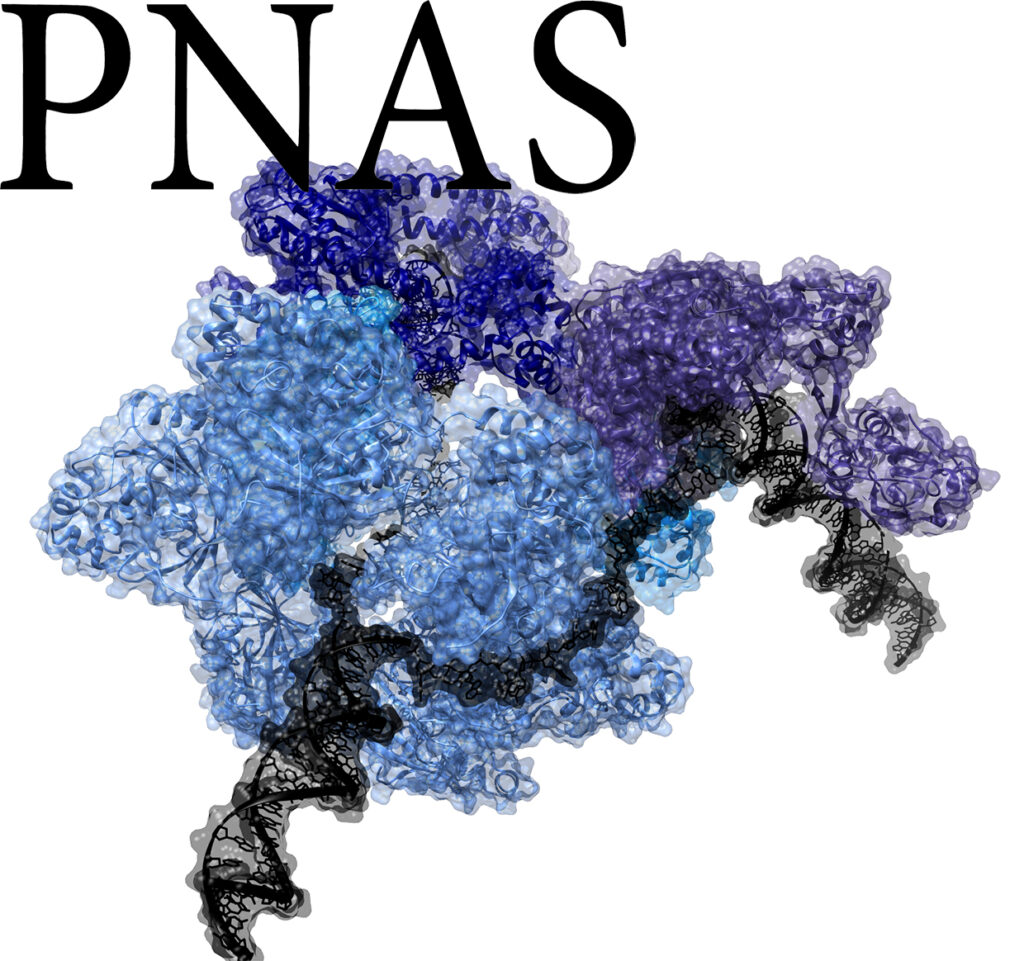
Arkadiusz W. Kulczyk, Arne Moeller, Peter Meyer, Piotr Sliz, Charles C. Richardson
The antiparallel nature of the two strands in duplex DNA poses a topological problem for their simultaneous synthesis. The “trombone” model of the replication fork postulates that the lagging-strand forms a loop such that the leading- and lagging-strand replication proteins contact one another. The replisome then can move in one direction along the DNA while synthesizing both strands. Physical interactions between the replication proteins and DNA coordinate processive synthesis of the leading and lagging strands. Here, we present the structure of a functional replisome from bacteriophage T7. Our structural and biochemical analyses provide an explanation of the mechanisms governing coordination of leading- and lagging-strand synthesis. We present a structure of the ∼650-kDa functional replisome of bacteriophage T7 assembled on DNA resembling a replication fork. A structure of the complex consisting of six domains of DNA helicase, five domains of RNA primase, two DNA polymerases, and two thioredoxin (processivity factor) molecules was determined by single-particle cryo-electron microscopy. The two molecules of DNA polymerase adopt a different spatial arrangement at the replication fork, reflecting their roles in leading- and lagging-strand synthesis. The structure, in combination with biochemical data, reveals molecular mechanisms for coordination of leading- and lagging-strand synthesis. Because mechanisms of DNA replication are highly conserved, the observations are relevant to other replication systems.
DOI: 10.1073/pnas.1701252114
PMID: 28223502